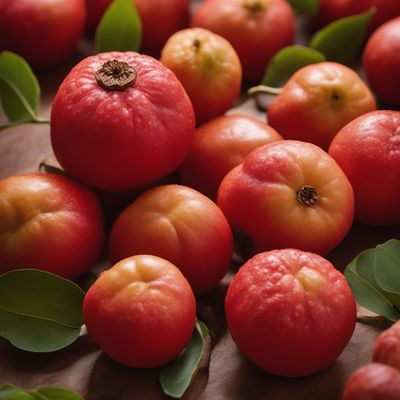
Ingredient
Quinces
The Fragrant Fruit
Quinces are characterized by their golden-yellow color, irregular shape, and firm, grainy flesh. They have a tart and slightly sweet taste, reminiscent of a combination of apples and pears. Quinces are often used in cooking and baking due to their ability to transform into a soft, rosy hue when cooked.
Origins and history
Quinces have a long history dating back to ancient times, originating in the Caucasus region of Eurasia. They were highly regarded by the Greeks and Romans, who associated them with love and fertility. Quinces were also popular in medieval Europe, where they were used in various culinary preparations and medicinal remedies.
Nutritional information
Quinces are a good source of dietary fiber, vitamin C, and antioxidants. They are also low in calories and fat, making them a healthy addition to a balanced diet.
Allergens
Quinces are not commonly associated with allergens, but individuals with known sensitivities to apples or pears should exercise caution.
How to select
When selecting quinces, choose ones that are firm, unblemished, and free from any signs of mold or decay. The skin should be smooth and golden-yellow in color. Avoid quinces that are overly soft or have a greenish hue, as they may not be fully ripe.
Storage recommendations
To prolong the shelf life of quinces, store them in a cool, dry place away from direct sunlight. They can be kept at room temperature for a few days, but for longer storage, refrigeration is recommended. Once cut or cooked, quinces should be stored in an airtight container in the refrigerator and consumed within a few days.
How to produce
Quinces can be grown in home gardens or purchased from specialty stores or farmers markets. They require a sunny location, well-drained soil, and regular watering. Quince trees are hardy and can withstand various climates, making them suitable for amateur gardeners.
Preparation tips
Quinces can be used in a variety of culinary preparations, including jams, jellies, pies, tarts, and compotes. They can also be poached, roasted, or used to flavor beverages such as teas or cocktails. When cooking with quinces, it is important to note that they require a longer cooking time to soften and develop their characteristic flavor.
Substitutions
Apples or pears can be used as substitutes for quinces in certain recipes, although they may not provide the same unique flavor and texture. Alternatively, quince paste or quince jelly can be used as a substitute for fresh quinces in some applications.
Culinary uses
Quinces are commonly used in traditional dishes and desserts in Mediterranean, Middle Eastern, and Central European cuisines. They are often incorporated into dishes such as membrillo (quince paste), quince tarts, quince jam, and quince liqueur. Quinces are also popular in savory dishes, where they are used to add a tangy and aromatic element to stews, tagines, and roasted meats.
Availability
Quinces are commonly available in countries such as Turkey, Iran, Greece, Spain, Portugal, and France. They are also cultivated in parts of North America, South America, and Australia.
More ingredients from this category
Recipes using Quinces
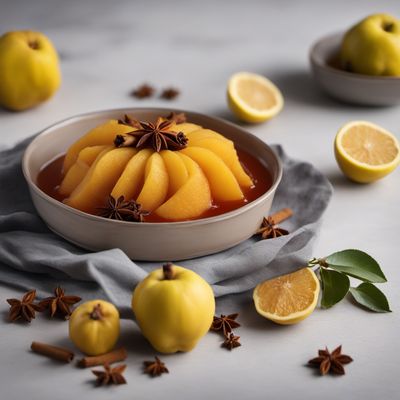
Leonese-style Ayva Tatlısı (Quince Dessert)
Deliciously Sweet Quince Delight: A Taste of Leonese Cuisine
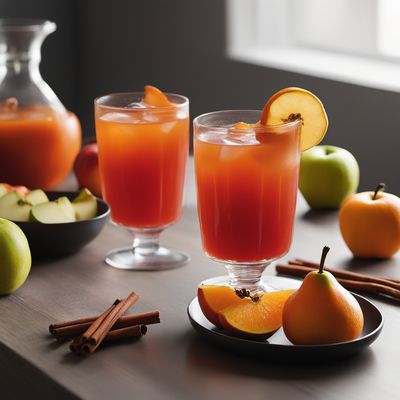
Jeonggwa: Sweet and Fragrant Korean Fruit Punch
A Symphony of Sweetness: Jeonggwa, the Delightful Korean Fruit Punch

Balkan Quince Preserve
Golden Delight: Balkan Quince Preserve

Ayva Tatlısı with Cinnamon and Honey
Heavenly Turkish Delight: Cinnamon and Honey Infused Ayva Tatlısı
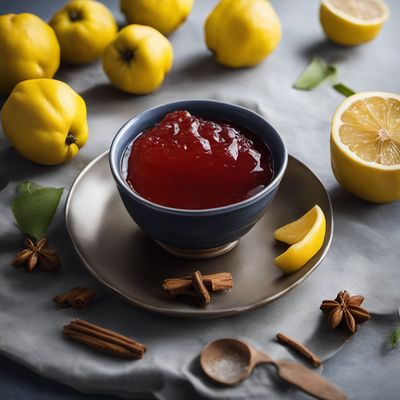
Maritime Quince Jam
Tangy Delight: Maritime Quince Jam
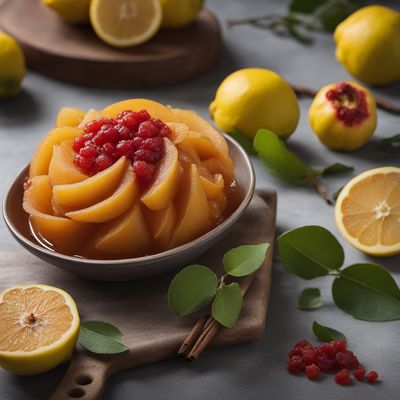
Quince Delight
A Sweet Spanish Delicacy: Quince Delight

Roasted Chicken with Quince
Quince Delight: A Succulent Roasted Chicken Recipe

Kotonjata Delight
Decadent Croatian Delight: Kotonjata Dessert
